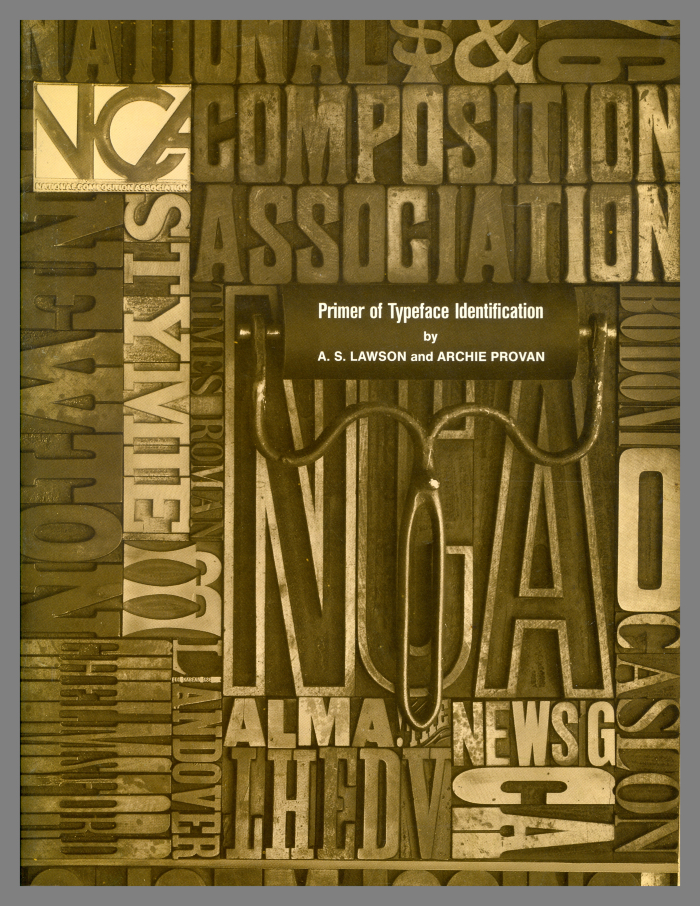Collections
Primer of Typeface Identification / A.S. Lawson, Archie Provan, and Frank J. Romano
Books
REF.TY.1279
36 p. : ill. ; 28 cm.
1976
Typography, Typesetting
In Primer of Typeface Identification, Alexander S. Lawson (printer since 1928), Archie Provan (Associate Professor in the School of Printing, Rochester Institute of Technology), and Frank J. Romano (industry consultant and recognized authority on photocomposition) attempt to present a “brief history of the development of selected typefaces, their common usage and most noticeable differences.” The goal of this title is to serve as an at-a-glance manual to help any reader become better able to understand type and its use. The authors do this by including 26 of the most commonly used typefaces as illustrators.
As noted in the book's introduction, “The easiest way to start learning type identification is to group them according to similarities…Most types can be classified under 8 main headings: Blackletter, Old Style, Transitional, Modern, Sans Serif, Square Serif, Script Cursive, and Decorative-Display.” Lawson and Provan begin the book by first providing a brief history of each of these categories, explaining their development, key characteristics, and some current types within the group.
The remainder of the text includes a discussion of the 26 highlighted typefaces -- defining their key characteristics, primary uses, and a brief history of each. Three example paragraphs and a heading are included for each typeface, so that they can easily be compared with one another at a glance. Perhaps the main advantage of this title, however, may be found in the detailed and well-illustrated defining characteristics that are included for each typeface.
As the authors note, "adding complexity to the task of type recognition is the common usage of several names for the same face and the wide proliferation of type styles 'similar to' popular faces." To help users navigate this complicated landscape, they have also included within this manual a typeface nomenclature comparison chart providing the generic name of each typeface as well as the name used by each manufacturer of photocomposition film fonts.
